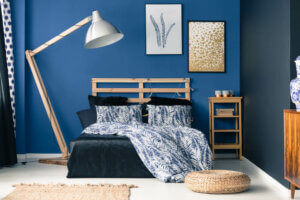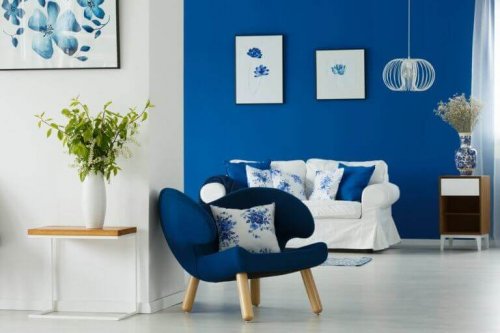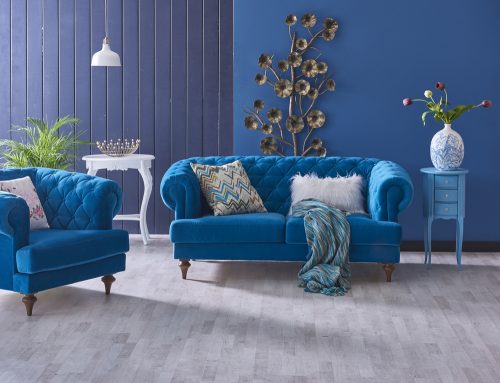How To Use Indigo In Your Interior Decor

There are some colors that seem to speak to our very souls. Their innate characteristics and the way we use them in our homes allow these colors to convey powerful emotions. With this in mind, today, we want to show you how to use indigo in your interior decor.
Everyone wants to give their home a personal touch. We try to establish our own unique style, aiming to create a look that stands out from the crowd. This is especially true when it comes to choosing the color scheme. While this can be difficult to pull off, it’s far from impossible.
Over the years, indigo has become an increasingly popular choice for public spaces, from hospital clinics and offices, to waiting rooms and reception areas. But can we use it in our homes? Absolutely! It’s simply a question of knowing where to use it, and how best to combine it with other elements.
What can indigo bring to your home?

This color naturally tends to absorb light, transporting us to a tranquil, more subdued world. With it, you can create a look that’s stronger and more defined. This, in turn, will help to convey feelings of security, and give your home a greater sense of character.
Indigo is undoubtedly one of the rising stars in the world of interior design. Until recently, it was rarely used in traditional family homes, as it was often considered too dark. However, as with many colors, it’s simply a question of knowing how to unite and combine it with other tones.
Indigo is a color that offers a real sense of gravity, making it the ideal way to round out your color palette, and give your home those perfect finishing touches. The strength and intensity of a color like indigo means that it can easily stand out against warmer and lighter tones.
If you want to bring a sense of character to your decor, indigo is the ideal color for you.
5 ways to incorporate indigo into your home

When it comes to using indigo in your home, it’s important to choose the right place to use it. To do this, you need to think about what role you want indigo to play, and the meaning you’d like it to have.
1. Dressers – if your bedroom is mainly painted or furnished in whites and grays, it’s important to break the monotony by incorporating brighter colors like indigo. Indigo dressers can work really well here.
2. Bed sheets and comforters – using colors like indigo for your bed sheets will instantly make your bed stand out. Plus, blues are well-known for their calming effect – exactly what every bedroom needs.
3. Exposed ceiling beams – using indigo on your ceilings can actually be a great way to create a subtle, yet powerful contrast. By painting exposed beams in indigo, you’ll give them prominence in your room, allowing them to take on a greater role in the overall decor.
4. Window frames – with the right color paint, you can take your window frames from the ordinary to the extraordinary. Blue can be a great option here, naturally harmonizing with many of the shades we can see from our windows.
5. Couch cushions – while indigo furniture could be a viable option for your living room, if you really want to make your sofa stand out, the best way to do this is to use the cushions. Combining a gray or blue sofa with a selection of indigo cushions is a fantastic way to create contrast, and make your sofa the focal point of your room.
The walls

Using indigo on your walls is a great way to make this color stand out. If you really want it to take center stage in your decor and fill your home with its powerful, calming sensation, you need to make sure it’s the dominant shade in your color palette.
With its close ties to both water and cleanliness, indigo undoubtedly works best in rooms such as kitchens and bathrooms. That said, it can also be an interesting option when it comes to decorating bedrooms, living rooms, or dining rooms.
While this color is often associated with maritime or Mediterranean style decor, it’s also perfect for bringing a touch of gravity and formality to your home. It can also be useful when it comes to creating contrast, forming a dark, somber background that will instantly help to emphasize lighter tones.
All cited sources were thoroughly reviewed by our team to ensure their quality, reliability, currency, and validity. The bibliography of this article was considered reliable and of academic or scientific accuracy.
- Gwynn, Kate; Sloan, Annie: El color en la decoración, Blume, 1999.








